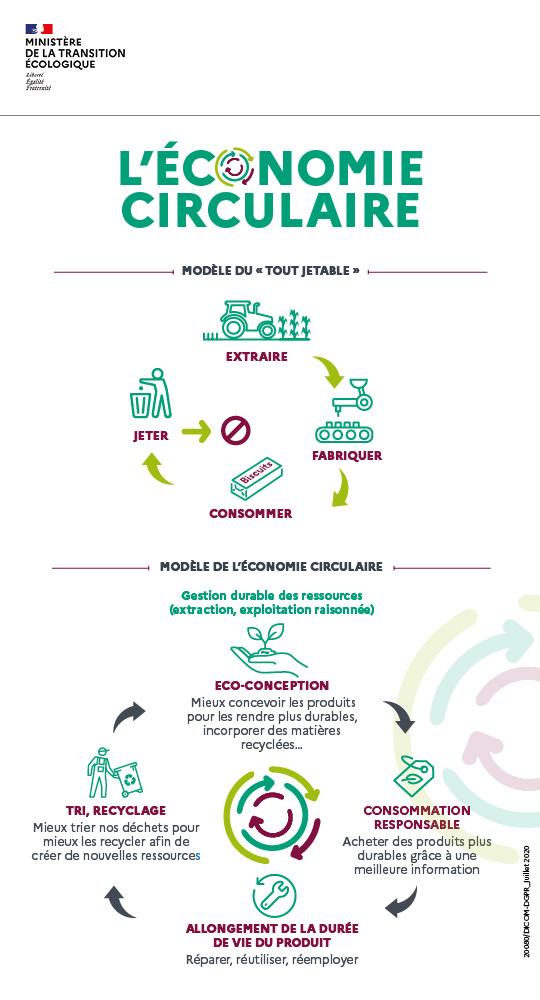The circular economy
in the building industry
Valobat is committed to a more responsible building and works to propose to all actors solutions allowing to move towards a circular and more virtuous economic model.
What is the circular economy?
The law on the energy transition for green growth of August 18, 2015 recognizes the transition to a circular economy as a national objective and as one of the pillars of sustainable development. This law set out a clear definition of the circular economy (Environment Code, Article L. 110-1-1):
"The transition to a circular economy aims to move beyond the linear economic model of extracting, manufacturing, consuming and throwing away by calling for sober and responsible consumption of natural resources and primary raw materials as well as, in order of priority, the prevention of waste production, in particular by reusing products, and, according to the hierarchy of waste treatment methods, reuse, recycling or, failing that, recovery of waste."
(for more information, please visit the website of the Ministry of Ecological Transition)
L'ADEME defines the circular economy as "an economic system of exchange and production which, at all stages of the life cycle of products (goods and services), aims to increase the efficiency of the use of resources and reduce the impact on the environment while developing the well-being of individuals.

The legal framework currently in force in France: the anti-waste law for a circular economy of February 2020
- get out of the disposable world;
- better inform consumers;
- to fight against waste and for solidarity reuse;
- act against programmed obsolescence ;
- to produce better.
Circular economy in the building sector
With the entry into force on January 1, 2022 of the Extended Producer Responsibility for Building Products and Materials, an entire sector is now even more involved and active in the circular economy.
Currently, the building sector is * :
- 40% of European energy consumption and more than 50% of raw materials extracted;
- 46 million tons of waste each year in France (more than households - 30 million tons) but 4 to 5 times less than public works (185 million tons);
- almost all (93%) of this waste comes from demolition/rehabilitation work, with new construction accounting for the balance.
*INIES figures (for more information, click here)
The building sector can and must act at different levels to improve its environmental impact: strengthen waste sorting, recover it and develop reuse.
To move from a linear mode of production and consumption where materials are extracted, used to make products that are consumed and then discarded, to a circular model using the waste produced as resources, it is essential to work upstream, from their production, on the efficiency of products, their impacts and how they can be an integral part of a responsible and sustainable building.

The life cycle of a product in the building sector
Knowing the life cycle of products is essential to measure the environmental impacts of a building. The Life Cycle Assessment (LCA) of building products is presented and detailed in the ESDS (Environmental and Health Declaration Sheet).
Each EHSF contains a product characteristic, the functional unit of the product and its lifespan, its environmental profile, health and comfort of use information as well as the identity of the issuer of the EHSF.
This mandatory technical document is a major multi-criteria tool to help professionals in their choices to make a building more sustainable, with limited impacts on the environment while creating a healthy atmosphere for future users.
Closed loops
At the end of their life, most products become waste. However, it is possible, depending on their nature and design, to transform them into new resources for the building industry.
To learn more about the development of closed loops, go to our project page
How to implement a circular economy approach in the building industry?
- By conducting a life cycle analysis of your products
- By contacting Valobat for help:
Training sessions and personalized support by sector will be organized to enable you to work on extending the life of products and materials and reducing the environmental impact of their production, implementation and use.
For member companies, Valobat will propose, in the form of calls for projects, financing to facilitate the integration of secondary raw materials in industrial processes, thus promoting closed loops and the creation of added value for the benefit of our territories.


